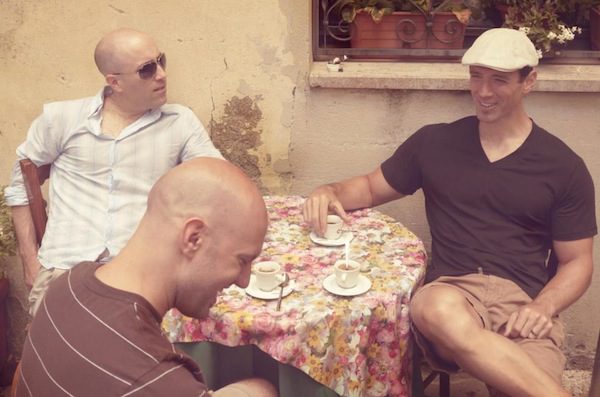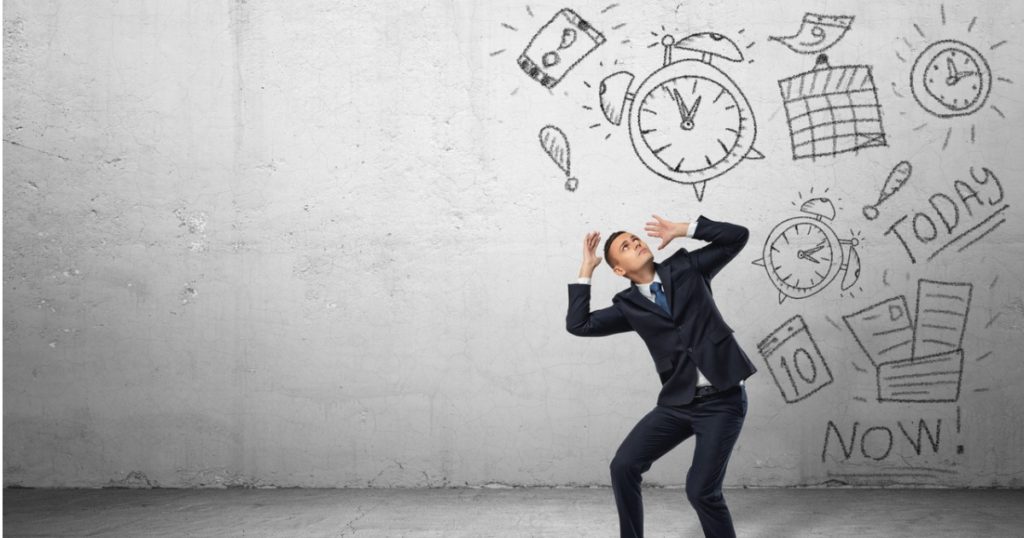A lot of men struggle with food, eating, and body image… but don’t talk about it. Are cultural or individual beliefs about “being a man” to blame? In this article we explore how “acting like a man” can hold men back. Plus we offer 5 ways to challenge male stereotypes and coach men through change.
- Want to listen instead of read? Download the audio recording here…
++++
As a piece that explores gender, this content may be sensitive for some. With that said, we believe it’s important to examine how traditional male stereotypes can negatively influence men’s experiences with food, fitness, and body image. Of course, there’s no such thing as a “stereotypical male” because men have such a wide spectrum of experiences. At the same time, we’re convinced that the same principles of compassion, acceptance, and authenticity are useful across the entire spectrum of “maleness” and “masculinity”.
++++
Maybe you recognize this client.
He came to you because his doctor warned him about his blood pressure. Or his spouse urged him to investigate his chronic digestive issues. Or his buddies have been razzing him about his extra “insulation”.
He’s a nice dude, but he’s a little… tense. You can see it in his hiked-up shoulders and clenched jaw. He always greets you with a handshake, but avoids direct eye contact. He doesn’t smile a lot.
He briefly mentioned that work has been crazy for him lately, and that he’s going through some “family stuff” too.
You suspect he’s struggling. But he doesn’t look like he wants to “talk”.
Your conversations tend to be emotionally flat. Your questions about his diet, his exercise, his sleep, his stress, are met with a poker face and one-word answers. But you wonder:
Is this really the whole story?
Talking about our lives can be messy, confusing, and personal.
This may be especially true for men.
Ugh, vulnerability.
Truthfully, being vulnerable is hard for everyone, not just guys. Many women feel they need to manage hectic lives full of careers, caregiving, and keeping it all together. They’re not supposed to show their untidy parts, either.
But men are particularly prone to being stigmatized for being, well, soft.
Cry??!
Nuh-uh. Be a man.
Talk about your feelings??!
Show me the exit door.
Admit your weaknesses??!
Over my dead body.
However, in order to move past our struggles, we need to acknowledge pain points, explore what’s not working, and often, (squirm) ask for help. (And then we need to be willing to fail. Over and over again.)
All of that involves getting incredibly vulnerable and transparent.
For many guys, old gender ideas die hard.
Think of all the male role models you can.
How many of them can you imagine hashing out their feelings about their body, or their fears about becoming frail and old?
How many of them can you see humbly asking for help, or admitting that much of their life isn’t working anymore?
How many of them can you picture crying?
(And no, not the “crying” of the championship winner as he sings his national anthem, and one stray tear drips down his clenched, square jaw.)
Lots of guys believe that being a “good man” means “keeping it in”.
If you’re a guy, think about the number of times you’ve heard variations of the following phrases in your own life.
- “Be a man.”
- “Man up.”
- “Men don’t cry.”
- “Grow a pair.”
- “You ____ like a girl.”
If you’re a coach or trainer, you might even have used these phrases as “motivators” or “light-hearted jabs”.
Although they’re often spoken casually, they penetrate our cultural consciousness and prime our expectations of what “appropriate” male behavior is.
Further, these messages may discourage some men from being vulnerable and talking about important things in their lives.
And so, these messages perpetuate the following kinds of beliefs:
- Men aren’t supposed to burden others with their problems. They’re supposed to figure it out on their own.
- Men aren’t supposed to open up to others, especially not other men.
- Men aren’t supposed to ask for help, directions, or show signs of weakness.
As a result, even when they have a lot going on under the surface, many men will fight to keep up appearances.
“Everything’s fine”, they say. Even when it’s not.
We’re also taught that certain problems and solutions are “gendered”.
For instance, culturally speaking, especially for straight guys, it’s not traditionally “manly” to:
- Struggle with eating habits*
- Have a complex emotional relationship with food*
- Worry about how your body looks*
- Be limited by pain, injuries, chronic illness or disability
- Be overwhelmed by stress
- Ask for help
* These topics are especially prone to gender-bias. Almost all materials about disordered eating and body image are by and for women.
Of course, each person has a different relationship to gender norms.
Some people stick closely to their culture’s script for what it means to be male or female.
Some people enjoy actively opposing and smashing cultural gender rules.
Some people do whatever they like, and are only barely aware that gender is a thing in the first place.
Yet despite individual differences, to some degree:
Gender norms and expectations shape many parts of our lives.
This includes things like:
- Our sense of who we are
- Our behaviors, mannerisms, and language
- The roles we choose to play (such as “provider father” or “supermom”)
- How we are in certain environments (such as gyms), and
- How we relate to others (like our friends, partner, coach, co-workers, doctor, etc.)
Getting in shape is gendered.
Free weight areas in gyms are still mostly filled with men grunting and flexing.
Yoga and Zumba classes are still mostly full of women.
Coaches may expect that men want to bulk up, and that women want to slim down. Supplements aimed at guys have names like Berserker or Extreme Something-or-other that sound more like Bond villains than nutrition products.
Among Precision Nutrition Coaching clients*, lots of guys don’t seek help until they’re in dire trouble — after a major injury, health scare, or other crisis that leaves them little choice but to start making changes.
* Even PN Coaching interest is gendered as we see a 2:1 ratio of men:women on our coaching presale lists and that same ratio persists at registration.
What we eat is gendered too.
Who do you imagine wolfing down steak, beer, wings, and chili-cheese fries?
Who do you imagine delicately picking at kale, yogurt, smoothies, and fruit?
In North American culture, we have particular ideas around which foods are traditionally masculine and which are feminine.
For example, there’s a “Hungry Man” dinner, in both regular and XXL size… but there’s no “Man Watching His Waistline” or “Hungry Woman” dinner.
How and why we eat is also gendered.
A recent study from the Cornell Food and Brand Lab found that men eat up to 30% more food when they’re in social situations. The same study found that women eat slightly less food when around others.
Culturally, eating a lot is often part of traditional heterosexual masculinity.
This works for guys who want to gain weight, but not so much for guys who want to lose fat and/or make healthier choices.
According to Kevin Kniffin, one of the Cornell study’s authors:
“Even if men aren’t thinking about it, eating more than a friend tends to be understood as a demonstration of virility and strength.”
Eat an epic portion lot of steak and potatoes?
You da man!
Opt for a salad instead of fries and leave half your burger untouched?
Bro, what?!
Plus, men are socialized to ignore pain and discomfort.
Stomach cramps and heartburn?
Throw down some antacids and walk it off.
Choosing food consciously, checking in with appetite, noticing feelings and — ugh — engaging in “self care”, is seen as something only women do.
Many men can feel that these habits are “unmanly”.
They might not say it that way. Instead, they might say they’re “too busy”. Or they “don’t have time”. Or, “Listen, my boss is on my case right now and I really can’t deal with this health crap.”
Of course, men still have feelings, even if those feelings aren’t culturally accepted.
Just because it’s not considered culturally OK to feel, think, or do certain things, it doesn’t mean that stuff doesn’t happen.
- Men may feel insecure when they stand in front of a mirror, poking at their love handles, or critically inspecting their pecs.
- Men may compare themselves to fitness magazine cover models, and feel inadequate and ugly.
- Men may have dreams of feeling confident in a swimsuit.
- Men, after a stressful day at work, may just want to lie on the couch and eat a pint of peanut butter swirl.
- Men may have feelings of uncertainty, overwhelm, shame, and grief, that they struggle to handle.
But men, particularly heterosexual guys who have more traditional gender ideals, may also feel that these things aren’t “supposed” to happen or be felt.
Problem is:
To change our outsides, we need to face our insides.
In PN Coaching, clients learn to work on their “inner game” (thoughts, feelings, and automatic behaviors) so they can change their habits and bodies.
(Even in our Level 1 and Level 2 Certifications for professionals, PN shows students how to manage that inner change process as they evolve as a coach).
This means, at some point along the journey, whether coach or coachee, people have to face [cue dramatic music]… their feelings.
To change, you have to believe different things.
As a health and fitness professional, you might start with practical matters: what foods to eat, how many reps, how many hours of sleep, etc. But eventually you’ll need to talk about less surface-level matters, like beliefs.
For many, unhealthy beliefs about food, exercise, and their bodies are major limiting factors towards progress. This might include gender-biased beliefs like: “Men don’t eat salad” or “Women shouldn’t have big muscles”.
These beliefs might sound trivial, but they influence a person’s behavior in powerful ways. If a man holds beliefs about food or his body, you can bet those beliefs are showing up in his life, shaping his behaviors and his results.
Often, beliefs have been around for a long time, and may be reinforced by a person’s environment or relationships. When they become aware of the beliefs that shape them, they might not like what they see. They might be immature, prejudiced, and unforgiving.
Therefore, exposing our beliefs can be uncomfortable. But…
We often need to feel uncomfortable in order to change.
Coaching can help ease this discomfort.
When clients or patients are in this (often necessary and unavoidable) “awkward phase” of change, a coach can help them:
- identify underlying beliefs and assumptions about “being a man”;
- be creative and come up with different, more helpful beliefs;
- affirm and reinforce new beliefs;
- be a healthy role model of someone who rebels against harmful gender stereotypes; and
- identify additional sources of support, whether it’s a spouse, a trusted friend, or the services of another qualified professional, like a therapist or medical doctor, if needed.
Having a role model or a non-judgemental witness during this uncomfortable phase can help a person feel less alone and more capable of change.
How to coach men to change.
So, what does it actually look like to coach a man?
And how can we shape the coaching experience into something that goes beyond grunts and surface-level stuff, to something that’s meaningful and transformational?
1. Put yourself in the client’s shoes.
Let’s use a hypothetical male client, Gary. Thanks to a recent life crisis and an aching back, Gary has decided that it’s time to change. He’s just signed up to do a consultation with you.
Gary arrives at the gym… and is instantly reminded of why he hasn’t worked out since college.
The place smells like the inside of a hockey bag. The music is loud. A part-man, part-gorilla wearing a “CRUSH IT” t-shirt stares him down before ripping 400 lbs off the floor and dropping it with a smash. Clearly his back doesn’t hurt.
Everyone at the gym seems to live here. Why are these people even working out? Gary wonders. They’re not fat and old like me.
His blood pressure is going up, and he’s barely made it past the front desk.
Then he meets you.
2. Use coaching skills to help put clients at ease.
In this situation, there’s a lot you can do to make this process more comfortable for Gary, therefore making it more likely he’ll eventually trust you, open up, and explore change with you.
You can help by:
- creating a safe, welcoming atmosphere;
- building rapport immediately;
- recognizing and empathizing with your client’s discomfort (if it’s there);
- normalizing the fact that people are often nervous, insecure, and/or intimidated when they start anything new.
So, you come out to the gym floor to greet him. You shake his hand politely, and introduce yourself. You are warm and welcoming.
You guide him to your quiet office. You can sense his nervousness. You smile and lean forward, to let him know you’re giving him your full attention.
“Thanks for coming in today, Gary. I’m glad you’re here.
“From what I’ve been told, sounds like you haven’t really been to a gym before.
“I know it can be pretty intimidating. When I first started coming I remember feeling self-conscious. Do you feel that way at all?”
Gary is surprised. The coach is… like him?
“Well, yeah. This is all new. I definitely feel… out of place.”
You reassure him, and point out what a courageous step this is.
“That’s completely understandable. It’s not easy to be outside your element.
“So really, kudos to you for coming today.
“Hopefully by the time we finish up you’ll feel a bit more comfortable.”
Gary visibly un-clenches. Smiles a little.
This is gonna be OK, he thinks. I can do this.
3. Allow the process of revealing what’s inside to take time.
Men often won’t drop their emotional barriers and open up about their relationship with food, eating, exercise, or body image right away.
You might have to spend a long time getting to know and understand your client before they feel comfortable enough to tell you what’s going on inside.
For instance, you soon learn that Gary grabs beers and wings with his buds every night. If you immediately start lecturing him about liver health and sodium levels, you might miss the chance to understand what’s really going on.
However, a few weeks of building trust and rapport, you might be able to inquire a little, “Gary, this wings night thing… do you just really love barbecue sauce that much, or is there something else this habit gives you?”
Gary tells you he doesn’t care about beer or salty snacks. The real reason for his habit is that he’s fending off the tremendous sadness he’s felt since splitting from his partner, and his bros are keeping him from going cuckoo.
He wasn’t ready to dive in right away. However, now that you know why he’s attached to the nightly ritual, you have a better shot at helping him change it.
A new way to coach: Compassion, vulnerability, and active listening.
Showing compassion, being vulnerable, and listening actively and respectfully are good coaching principles for clients of any gender.
But these coaching behaviors may be especially important for male clients/patients, who are less likely to get them from other people in their lives, especially other men.
“Soft skills” aren’t traditionally associated with men.
Stereotypically, dudes are supposed to reject all this mushy stuff.
Feelings are for wimps.
Talking about feelings… even worse.
Traditional Manly Coach Hardass won’t empathize with you about portion control (because he always eats an extra helping of steak, then eats the silverware.)
Hell will freeze over before he shares a time he felt insecure in the gym.
If you’re in pain, he’ll hand you the surgical tape and tell you to wrap up and get back in there. “Try harder.” “Stop bitching.”
However, qualities like compassion, vulnerability, and good listening need to be part of a healthy, long-term coaching relationship.
When coaches improve, clients are more likely to change.
Elite level compassion and vulnerability from a coach can:
- help clients feel more courage when trying new or uncomfortable things,
- make clients more willing to persist in the face of obstacles,
- encourage clients to talk about painful or sensitive topics, and
- help clients be more resilient, more able to bounce back from setbacks.
These qualities are central to the coaching process — for all clients. But for some male clients in particular, who might not be used to this type of interaction, such coaching qualities can make a huge impact.
It could be the difference between an “okay” coaching experience, and a life-changing one.
What to do next:
Some tips from Precision Nutrition
If you’re a guy trying to get a little healthier:
1. Have real conversations with other men.
Talk about subjects that are difficult, sensitive or uncomfortable.
Avoid getting stuck in the “bro talk” trifecta of weather, traffic, or sports. Branch out and talk about meaningful stuff like family, goals, and (gulp) struggles.
Don’t have other guys to talk to? This is a perfect opportunity to get a coach.
If you do have other guys to talk to, this is a perfect opportunity to learn more about them as people.
2. Connect over food in a different way.
Invite a male friend (or potential partner) over for a healthy dinner.
Cooking and eating together is a great way to build a friendship or relationship, and will be a lot more nutritious than going out to a bar for wings and beer.

3. Re-think what it means to “be a man”.
If you notice your ideas about “being a man” are kinda rigid, notice that.
(If they’re more open and flexible, notice that too. Just notice whatever you think and believe about “being a man”, and be curious about how that might show up in your daily-life choices.)
Notice if you’re putting a lot of pressure on yourself, or making poor choices because you’re afraid to look weak, or ask for help.
Avoid phrases like “man up”, “be a man”, “real men don’t _____”.
These are powerful phrases that force men into hyper-masculine behaviors, and prevent them from getting the support they need.
4. Be brave… really brave.
It’s not brave to hide or keep doing the same old thing, especially if that’s a habit for you.
What’s actually brave?
Reaching out to others.
Doing something different.
Asking for help.
Admitting you don’t know — or can’t fix — everything yourself.
Be brave. Define your gender identity — and your path towards growth, fitness, and health — for yourself.
5. Practice self-compassion.
The traditional culture of heterosexual masculinity teaches men they should be in control at all times, and if they’re not, they’ve failed or they’re weak.
It’s OK to struggle with change.
With health, fitness, and nutrition, that struggle can be particularly difficult.
Treat yourself like your good mentor, friend, or coach would treat you.
Like: “I’ve got your back, man.”
If you’re a coach with male clients:
1. Spend time building rapport.
Many male clients, especially older or more traditional ones who’ve learned some pretty specific gender norms, may not talk about deeper stuff right away.
Allow this process to be a little uncomfortable — for you too! Revealing deep stuff might be uncomfortable for your client, and sitting with your client’s discomfort might feel a little itchy for you. That’s ok.
Put in time building trust, connecting, and creating a foundation of support.
2. Be a role model.
Break some macho stereotypes and model a little vulnerability. Something as simple as “Yeah, I’ve felt insecure about my body too” can be hugely powerful.
Of course, don’t puke your worldly troubles, or ask clients to endure 10 minutes of your self-flagellation.
Just “go there” briefly with a quick human anecdote, enough for him to understand that other people feel what he feels, and that he’s normal.
You can also point your client to other examples of dudes breaking down stereotypes – whether it’s a group of buff celebs talking openly about their body image struggles, or the guy at your gym who wears a “CRUSH IT” t-shirt — but also volunteers with the elderly.
3. Think about how you frame your instructions.
Some male clients will feel more comfortable if you use guy-specific language.
For instance, many guys respond better to things like “projects” than “exploration”, and may prefer the concept of “thinking” to “feeling”, as in, “What goes through your mind when you have trouble slowing down your eating?”
Note: You don’t have to live in Stereotype Land (“Bro!” “Dude!” “Arm punch!”). In fact, if you serve a client population with a wide range of male-identified gender expression and sexuality, that might be the wrong approach.
Consider what language and ideas are relevant to each client, and speak to them as unique people.
4. Encourage slow change.
Maybe your male client has thrown out gender norms years ago and is ready to rap about emotional eating on Day 1.
Cool.
Or… maybe you’re working with a Vietnam War vet who believes you should only talk about feelings when they describe a flesh wound.
The second guy will probably require a slower, more gradual approach to change. That’s OK.
Slow down, start with smaller, more superficial changes, get to know him gradually, and keep offering that kind, compassionate vibe.
5. Remember: Clients are whole, complex individuals.
Human beings are complicated and unique. They have many rich stories. Gender is just one dimension of many.
Don’t stereotype or reduce people to a single factor, but do notice how particular social norms and scripts might shape your clients’ belief systems.
Ready to go from a skilled coach to an exceptional one—in just 20 weeks?
The PN Level 2 Master Health Coaching Certification fast-tracks your growth—giving you the skills, experience, and confidence most coaches take 5–10 years to develop.
This is NOT a “Level 2” nutrition course. It’s NOT about meal plans or macros. It’s an advanced, practice-based program that prepares you to:
🔑 Understand your clients on a deeper level—beyond food and fitness—and help them create lasting change.
🔑 Navigate complex situations like mental health, stress, and emotional setbacks with confidence.
🔑 Master behavior change so clients stay committed—no matter what life throws their way.
You’ll learn from your mentors—PN’s industry-leading coaches—through a blend of weekly live mentorship, self-study, and real-world coaching practice that accelerates your growth.
Why it matters:
Level 2 is NBHWC-approved, so graduates are eligible for:
- National Board Certification through the NBHWC
- Professional membership with the Health Coaches Alliance (HCA)
These credentials expand your career opportunities, build your credibility, and set you apart in a growing—and crowded—field.
Don’t spend a decade learning what you can master in 20 weeks.
References
Click here to view the information sources referenced in this article.




Share